What is First-Party Data? Your Guide For 2024
Reading Time: 8 minutes
Data plays a pivotal role in today’s world, shaping businesses’ sales and marketing strategies. With a plethora of information available at our fingertips, it becomes imperative for companies to wisely choose the type of data they rely on for making informed decisions. Among the various categories of data, first-party and third-party data stand out as the primary sources utilized by businesses worldwide. First-party data, or the information directly collected by businesses from their customers and audiences, holds a treasure trove of insights waiting to be unlocked. Unlike third-party data, which is acquired from external data aggregators and might not always align perfectly with a company’s specific needs, first-party data offers a goldmine of relevance and accuracy.
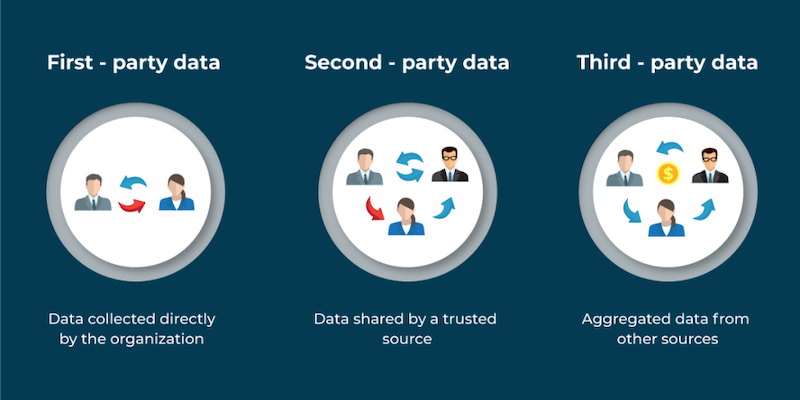
This blog post aims to illuminate the concept of first-party data, unraveling its significance in the contemporary business landscape. We’ll explore the stark contrasts between first-party and third-party data, highlighting the unparalleled advantages that come with owning and directly utilizing your data. From enhancing customer experiences to driving targeted marketing campaigns, first-party data emerges as a formidable asset in a company’s arsenal. Furthermore, we will delve into practical strategies for collecting, managing, and leveraging first-party data to its fullest potential.
What is First-Party Data?
First-party data represents the core information a business gathers directly from its interactions with prospects, customers, and users across various touchpoints. This data type is directly collected through a company’s own digital properties, such as websites, mobile apps, social media channels, customer surveys, and subscription-based emails. Essentially, it encompasses any data generated from direct interactions between a company and its audience, making it an invaluable asset for understanding customer behavior, preferences, and interests.
Unlike second or third party data, first-party data is unique to your organization. It offers unparalleled insights because it is gathered firsthand, providing a clear and undiluted picture of your audience. This data is crucial for creating personalized marketing strategies, improving customer experiences, and developing products or services that meet the specific needs of your target market.
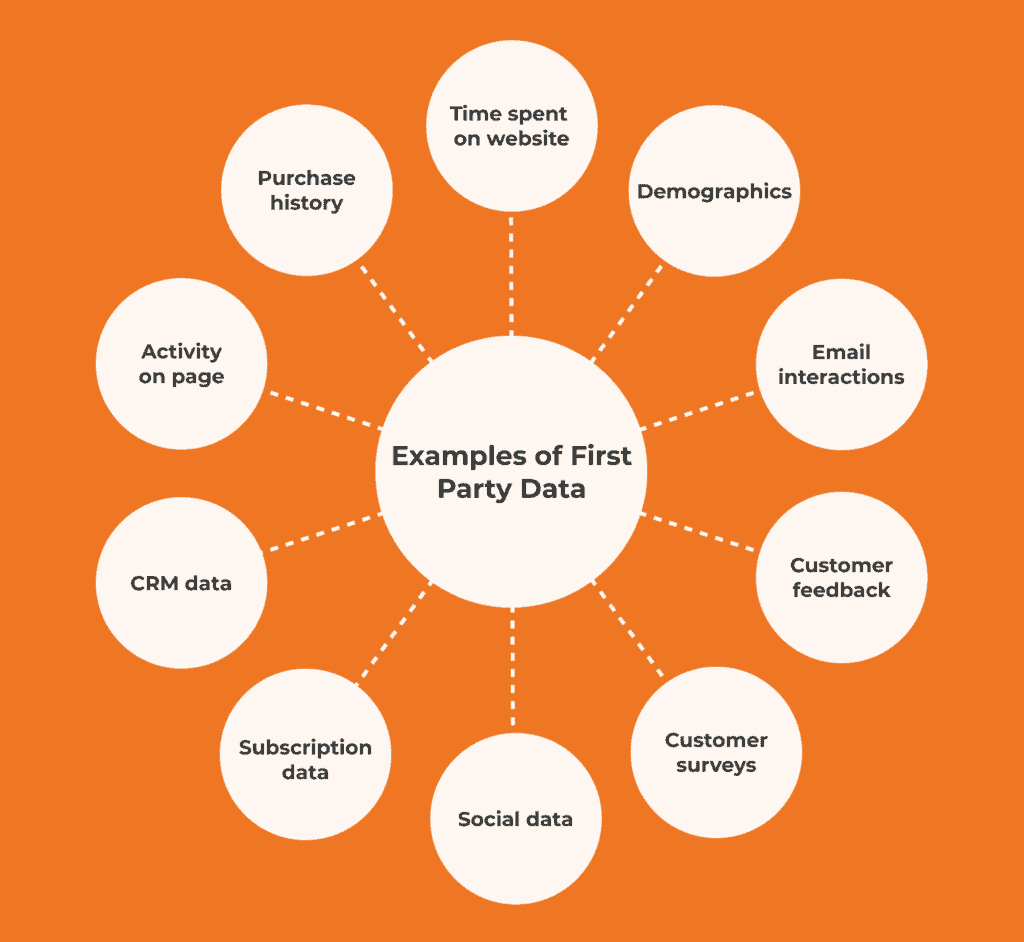
Other Types of Data Points
While we will focus on first-party data for this article, let’s also discuss other types of data points.
Third-party Data
Third-party data is information collected by an entity that does not have a direct relationship with the user whose data is being collected. Typically sourced from external aggregators, third-party data is vast and varied, covering a wide range of demographic, behavioral, and contextual information. While it provides extensive reach and can enrich existing datasets, it often lacks the precision and relevance of first-party data, and its usage is increasingly scrutinized under data privacy regulations.
Second-party Data
Second-party data is essentially another organization’s first-party data that you obtain directly from them, usually through a partnership or purchase. This type of data is beneficial because it’s still high-quality and relevant, similar to first-party data, but extends beyond your own audience. It offers a balance between the specificity of first-party data and the breadth of third-party data, allowing businesses to tap into new segments with confidence.
Zero-party Data
Zero-party data is information that customers intentionally and proactively share with brands. It includes preferences, purchase intentions, personal context, and how they want the brand to recognize them. This type of data is invaluable because it’s explicitly shared by the customer, making it highly accurate and relevant. Zero-party data empowers businesses to create personalized experiences and products, fostering deeper customer engagement and loyalty.
Each type of data plays a distinct role in the data ecosystem of a business. By understanding and strategically integrating different types of data, businesses can achieve a comprehensive view of their customers and market.
How to Collect First-party Data?
Collecting first-party data is a strategic process that enables businesses to gather valuable insights directly from their customers and prospects. This data is instrumental in creating personalized marketing strategies, enhancing customer experiences, and ultimately driving business growth. Here’s how you can effectively collect first-party data:
Utilize Website Visitor Tracking Systems
Website visitor tracking systems are powerful tools for collecting first-party data. They provide insights into how users interact with your website, tracking movements, page views, and specific actions taken. By analyzing this data, businesses can understand user behavior and preferences, tailoring their offerings to meet customer needs better.
Implement Lead Acquisition Modules
Incorporating various lead acquisition modules into your website is another effective way to gather first-party data. This can include:
- Web Forms: Customizable web forms can be strategically placed across your website to capture essential information from visitors. These forms can be tailored to collect data relevant to your business needs, such as name, email address, company details, and specific interests.
- Newsletter Sign-Up Forms: Encouraging users to subscribe to your newsletter not only helps in direct communication but also serves as a channel to collect first-party data. It’s an opportunity to understand what content your audience is interested in.
- Demo Scheduling Modules: For businesses offering software or services, demo scheduling modules can be a goldmine for first-party data. When prospects book a demo, they share valuable information about their needs and the solutions they are seeking.
Leverage Social Media and Third-Party Platforms
Your channels on third-party platforms, like social media accounts, are also rich sources of first-party data. When users interact with your content, participate in polls, or message your business directly, they provide insights into their preferences and interests. It’s important to integrate this data with your other first-party data sources to create a holistic view of your audience.
By implementing these strategies, businesses can effectively collect first-party data, laying the foundation for more personalized and effective marketing efforts.
Examples of First-party Data Points
Here are some key examples of first-party data points and how they can be utilized:
Demographic Data
This includes age, gender, education level, income bracket, and other characteristics of your audience. Demographic data helps in segmenting your customer base, enabling tailored marketing messages and products that resonate with different audience segments.
Activity and First-Party Buyer Intent Data
These data points are derived from how users interact with your website and online properties, such as pages visited, time spent on each page, and actions taken (e.g., clicking on a product link). This information is crucial for understanding what interests your visitors, their stage in the buying cycle, and how you can optimize their journey towards making a purchase.
Location Data
Location data provides insights into where your users are geographically. This can influence marketing strategies, such as targeting specific regions with customized promotions, adjusting product offerings based on local preferences, or optimizing the timing of your communications to match different time zones.
Lead Contact Information Through User Registration
When users register on your website or for your service, they often provide contact information such as names, email addresses, and phone numbers. This data is invaluable for direct marketing efforts, enabling personalized communication and fostering relationships with prospects and customers.
Transactional Data
This includes details from completed sales, such as purchase history, amount spent, and frequency of purchases. Analyzing transactional data helps businesses identify their most valuable customers, forecast future buying behavior, and tailor recommendations and offers to encourage repeat business.
CRM Data
Customer Relationship Management (CRM) systems store detailed information about your interactions with customers and prospects. This can include communication history, notes from sales calls, responses to marketing campaigns, and service tickets. CRM data is instrumental in providing a 360-degree view of your customers, allowing for highly personalized engagement strategies and improved customer service.
Top 5 Tools To Collect First Party Data
Leveraging the right tools to collect first-party data can significantly enhance your understanding of customers and prospects, leading to more effective marketing strategies and improved customer experiences. Here’s a closer look at some tools that can help businesses gather and utilize first-party data effectively:
Salespanel
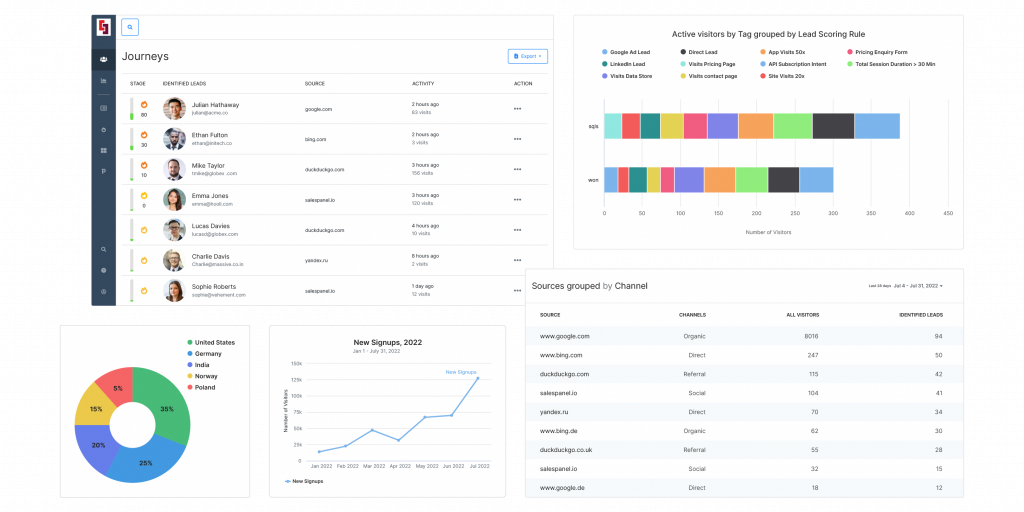
Salespanel is specifically designed for B2B businesses to track visitors on their websites and automatically collect lead information. When visitors sign up using various forms such as live chat, demo scheduling software, or newsletter forms, Salespanel captures this information seamlessly without the need for additional integration. It provides comprehensive tracking capabilities, offering insights into first-party intent data and understanding buyer behavior through 360-degree tracking. This tool is invaluable for businesses looking to deepen their understanding of prospective customers and tailor their sales strategies accordingly.
Google Analytics 4
Google Analytics 4 (GA4) represents the next generation of Google Analytics. It is designed to collect first-party data for statistical analytics, tracking user behavior across your website and applications. GA4 goes beyond mere page views to offer a more nuanced view of how users interact with your content, including measuring conversions and user engagement. With its focus on privacy and cross-platform measurement, GA4 is a critical tool for businesses aiming to adapt to a future without third-party cookies.
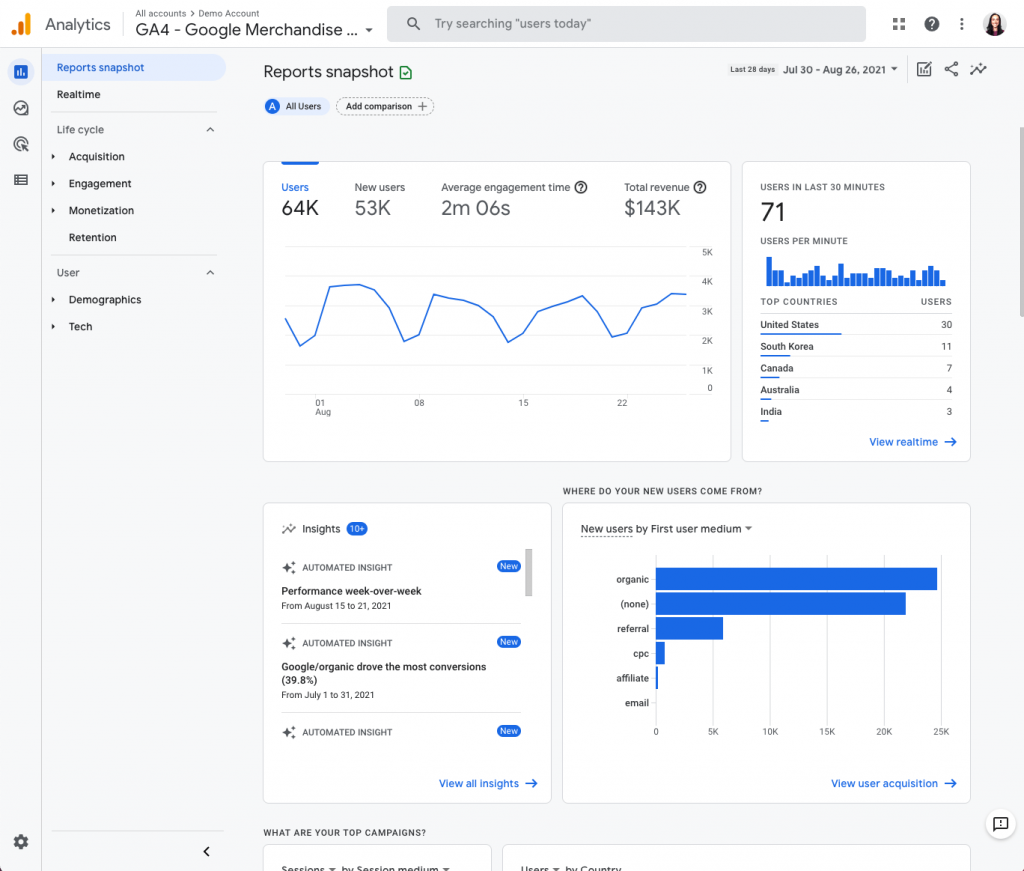
Stripe
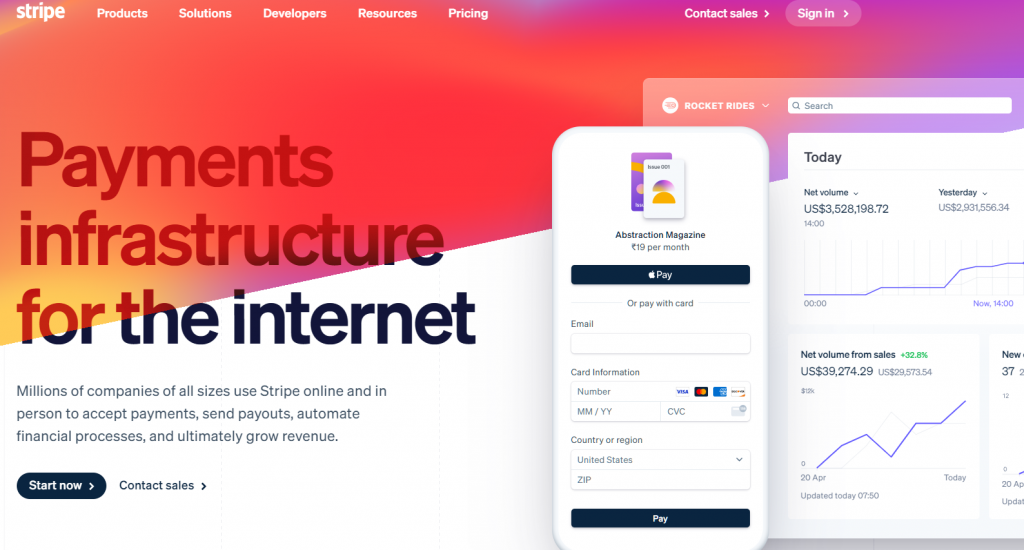
Stripe, a leading payment processing platform, is particularly effective for e-commerce businesses looking to collect transactional first-party data. It captures detailed information about customer transactions, including purchase amounts, frequency, and payment methods. This data can be leveraged to analyze purchasing trends, optimize checkout processes, and personalize marketing efforts based on purchasing history.
Mailchimp
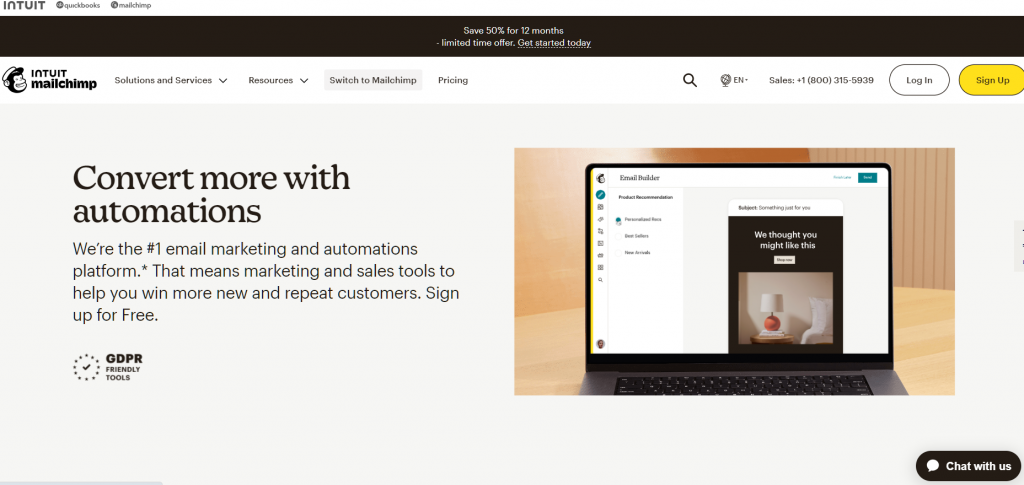
Mailchimp is a comprehensive marketing platform known for its email marketing services. It provides tools for collecting leads through signup forms and newsletter forms, enabling businesses to build and segment their email lists effectively. Beyond list building, Mailchimp offers robust campaign management features to engage these leads with personalized content, fostering stronger relationships and driving conversions.
Segment
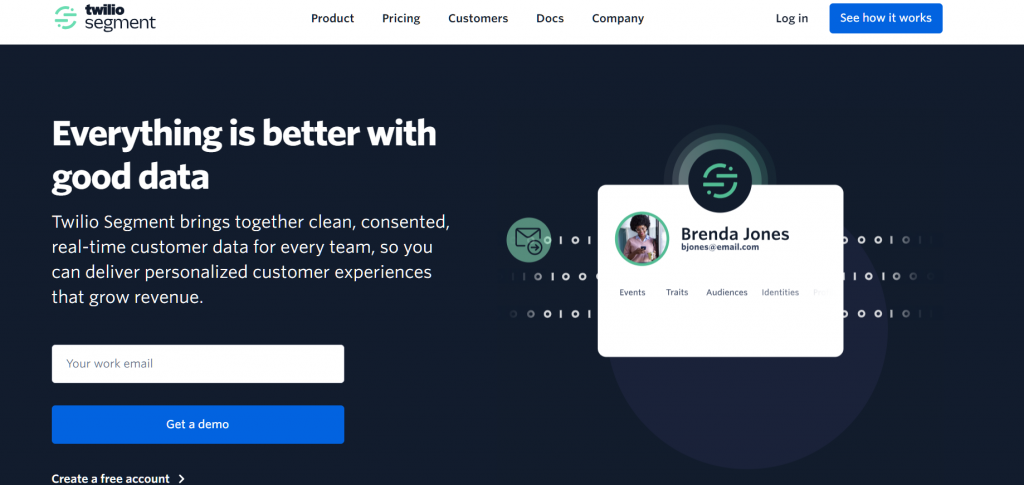
Segment operates as a customer data platform (CDP) that aggregates data from various first-party data sources, including websites, mobile apps, and other customer touchpoints. It centralizes this data into a single repository, making it accessible and actionable across the business. With Segment, companies can gain a unified view of their customers, streamline data governance, and enhance personalization efforts across all channels.
By leveraging these tools, businesses can capture a wide range of first-party data, from user behaviors and preferences to transactional details. This rich data landscape enables more informed decision-making, tailored marketing strategies, and ultimately, a more personalized customer experience.
Final Thoughts
It’s clear that the shift towards a more privacy-centric, customer-first approach to data collection isn’t just a trend; it’s the future. Businesses are navigating the complex world of data collection with a renewed focus on first-party data. This deep dive into the essence and power of first-party data underscores its critical role in enabling businesses to forge stronger, more personal connections with their customers, backed by trust and transparency.
First-party data stands out as a beacon of relevance and precision in a sea of generic, aggregated information. By collecting data directly from your customers and users through interactions on your website, social media platforms, and other digital touchpoints, you’re not just gathering information; you’re building a foundation for meaningful relationships. The tools mentioned in the article can help you collect first-party data more effectively.
First-party data emerges not just as a resource, but as a cornerstone of business strategy, driving personalization, enhancing customer experiences, and fostering long-term loyalty.
Sell more, understand your customers’ journey for free!
Sales and Marketing teams spend millions of dollars to bring visitors to your website. But do you track your customer’s journey? Do you know who buys and why?
Around 8% of your website traffic will sign up on your lead forms. What happens to the other 92% of your traffic? Can you identify your visiting accounts? Can you engage and retarget your qualified visitors even if they are not identified?
